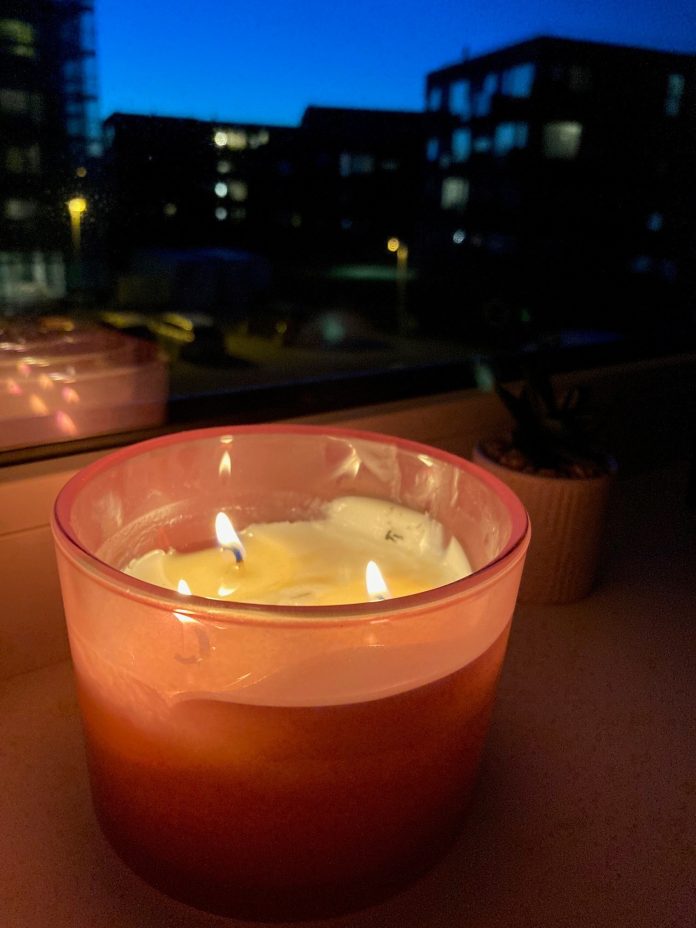If there’s one Estonian tradition that never needed a manual or a rehearsal, it’s Hingedepäev (All Soul’s Day). No poems to memorise, no songs to belt out in perfect pitch. Just a candle, a window, a quiet evening, and a sense that the ancestors might be somewhere out there, politely checking in on us.
I grew up with that ritual. Every 2 November, as the light dipped and the wind started to whisper like it knew secrets, my family would light a single candle and place it on the windowsill. The idea was simple — that glowing little flame was our “hello” to the ancestors, a signal across worlds saying: we’re still here, and we haven’t forgotten you.
Of course, as a kid with a hyperactive imagination (and an unhealthy fondness for fairy tales), I found the whole thing deliciously terrifying. There I was, standing in the half-dark, candle flickering, thinking: Right, this is it. The dead are coming to visit. Any moment now they’ll float in, have some soup, and probably drag me along to wherever they live.
I hadn’t even seen a zombie movie yet — thank goodness — but the concept was solidly in my mind. If Grandma’s ghost turned up, would she at least be friendly? Would she smell like her cabbage rolls? Would she approve of my messy room? These were the philosophical questions that kept me up at night while my parents were having their quiet moment of reflection.
The truth, of course, was far gentler. Nothing scary ever happened. No mysterious knocks on the window, no spectral footsteps, no floating soup spoons. What did happen was this: the house fell silent. My mum, dad and sister stood together, all of us looking at that small, steady flame. For a moment, everything stopped — the chatter, the background noise, even the air. It felt as if time held its breath just long enough for us to say, wordlessly: thank you.
And that’s the real beauty of Hingedepäev. It isn’t about loss, really — it’s about connection. It’s a pause between worlds, a kind of annual phone call to the people who built the path we now walk.
Estonians, being practical even about the supernatural, used to take this whole thing very seriously. In olden times, the dead weren’t just remembered — they were hosted. Families would clean the house, heat up the sauna, and prepare a little feast for the visiting souls. You’d call them by name, one by one, to join the table. No one made jokes, no one chopped wood or spun wool — that would have been noisy, disrespectful, and possibly grounds for a ghostly complaint.
There was even a tradition called hingesandid, “soul-sandits,” where children dressed in white would wander quietly from house to house, ululating softly — uu-uu-uu — not asking for lollies, but receiving small treats anyway, like nuts or bread. I suppose that was our very early, spiritually upgraded version of trick-or-treat.
And the fog — oh, the fog! The Estonians said that misty weather meant the souls were visiting. Imagine that: an entire nation looking at a foggy morning and thinking, “Ah yes, Aunt Leida’s here again, better behave.”
These were the rhythms of hingedeaeg, the time of souls. A season, really, not just a date — somewhere between late October and mid-November, when the boundary, according to folklore, between the living and the departed grew thin. And in that space, people found a sense of order. The fields were bare, the days short, the world quiet — and so we turned inward too. We remembered who we were, and who came before.
Fast-forward to now, and the modern version is far simpler. These days, Estonians light candles on their windowsills or at the cemetery, and maybe whisper a few private words to the air. We’ve mostly dropped the ghostly sauna invitations, which is probably just as well for the plumbing. But the essence remains: remembrance, gratitude, light in the darkness.
For me, living in Australia, that little candle connects both worlds — my childhood home and this one, the northern winter dusk and the southern spring evening. The weather might not match the folklore, but the feeling does. The act of lighting that candle still feels like opening a small door between generations.
I think about how the Estonian word hing means both “soul” and “breath” (hing, hingeõhk). It’s a reminder that our ancestors aren’t gone — they’re part of the air we breathe, the stories we tell, the names we carry.
And so every year, when November rolls around, I find myself reaching for the matches. The air might not be foggy here, the eucalyptus leaves may be rustling instead of birch, but the moment still lands the same way: soft, reverent, oddly comforting. I light the candle, place it by the window, and let it speak for me.
So this Sunday evening here in Australia, I invite you — join me in lighting a candle for the ancestors (and maybe for your future self too). Put the phone down, listen for the hush and look at the little flame. Let’s remember, and let’s give thanks. Because every flame is a tiny “hello, I see you, we’re still here”.
Read more about hingedepäev in Estonian




